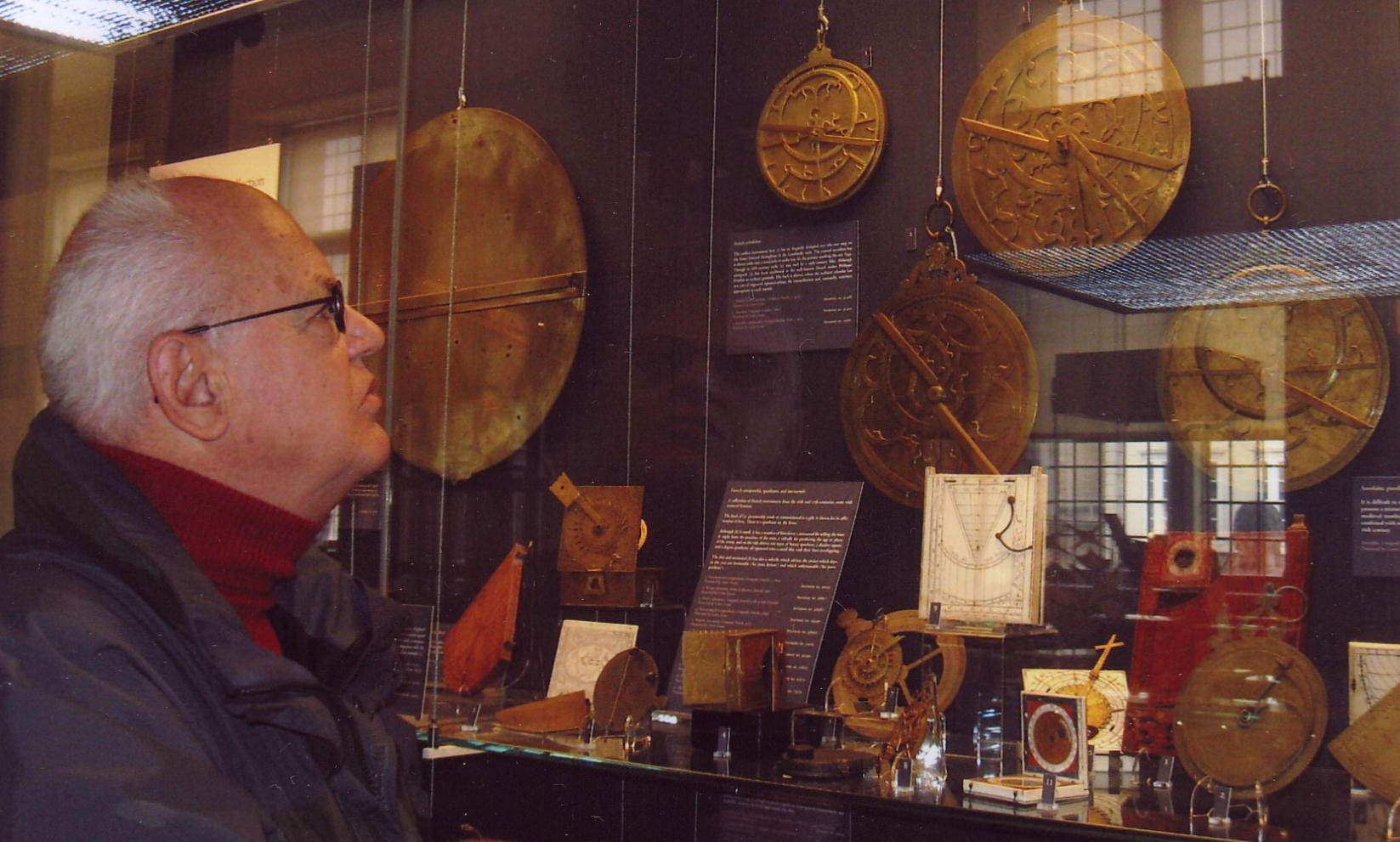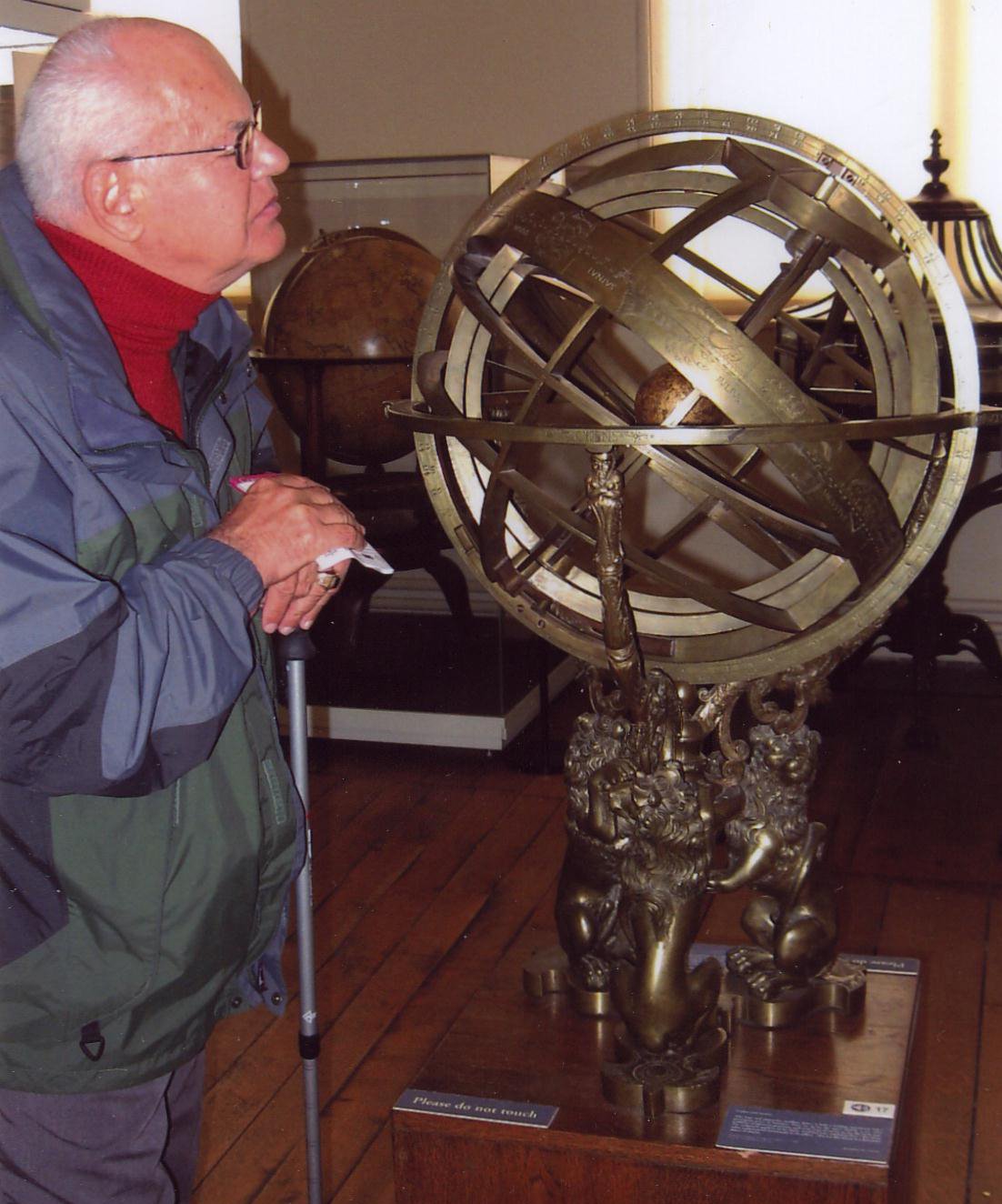- About MAA
- Membership
- MAA Publications
- Periodicals
- Blogs
- MAA Book Series
- MAA Press (an imprint of the AMS)
- MAA Notes
- MAA Reviews
- Mathematical Communication
- Information for Libraries
- Author Resources
- Advertise with MAA
- Meetings
- Competitions
- Programs
- Communities
- MAA Sections
- SIGMAA
- MAA Connect
- Students
- MAA Awards
- Awards Booklets
- Writing Awards
- Teaching Awards
- Service Awards
- Research Awards
- Lecture Awards
- Putnam Competition Individual and Team Winners
- D. E. Shaw Group AMC 8 Awards & Certificates
- Maryam Mirzakhani AMC 10 A Awards & Certificates
- Two Sigma AMC 10 B Awards & Certificates
- Jane Street AMC 12 A Awards & Certificates
- Akamai AMC 12 B Awards & Certificates
- High School Teachers
- News
You are here
Museum of the History of Science, Oxford
While touring Oxford, England on a rainy day this spring, I stumbled upon the Museum of the History of Science. The two story building on Broad Street is not imposing and from the outside provides no hint as to the mathematical gems it houses. Known as the “Old Ashmolean,” the building was constructed in 1683 as a public museum dedicated to an understanding of “nature.” It assumed its present form in 1924 when it acquired the Lewis Evans Collection of Historic Scientific Instruments. Evans (1853-1930) was a British businessman and avid collector of scientific instruments. While the Museum includes all of the sciences, two of its floors are devoted completely to displaying mathematical measuring instruments. They comprise the largest and most fantastic collection I have ever viewed. Among its treasures is the world’s most extensive collection of astrolabes.

Figure 1. Examining displayed astrolabes
Surveying instruments, quadrants, armillary spheres, curve generating linkages and various graphic drawing instruments and devices are also found in this collection.
However, one does not have to physically travel to Oxford to benefit from this find. Much of it is available virtually through the Museum’s website: http://www.mhs.ox.ac.uk. In particular, an image library allows visual access to thousands of objects. For example, a search on “astrolabe” brought up 335 images. A series of excellent, detailed online exhibits are also available for viewing and educational purposes. Those that deal most directly with the history of mathematics are:
The Renaissance in Astronomy (11 May - 9 September 2012)
The Geometry of War, 1500-1750
The Measures: A Flemish Image of Mathematics in the Sixteenth Century.
Epact: Scientific Instruments of Medieval and Renaissance Europe.
The Noble Dane: Images of Tycho Brahe.
Journey to this website for an informative and rewarding experience!

Figure 2. Italian Armillary Sphere, circa 1580
Frank J. Swetz, reviewer, "Museum of the History of Science, Oxford," Convergence (May 2008)




